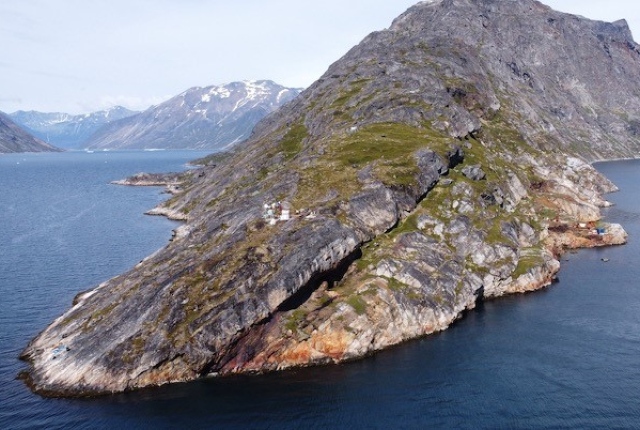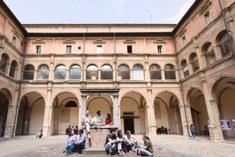Searching for geological hydrogen in Greenland's fjords

(Foto: GreenRoc)
Nanortalik is a small village in Greenland. Its name in Inuit means 'where polar bears go'. A group of scientists from the University of Bologna will spend two weeks sailing through the fjords off the coast of Nanortalik searching for geological hydrogen.
The mission, which will start on 24 June, is being carried out as part of the DeepSeep project, funded by the European Research Council (ERC) and will be led by Professor Alberto Vitale Brovarone from the Department of Biological, Geological and Environmental Sciences of the University of Bologna.
The research team, comprising four scientists from DeepCarbon Lab of the University of Bologna, a researcher from the CNR's Institute of Geosciences and Georesources and a researcher from the University of Copenhagen, will explore a south-western region of Greenland to look for evidence of the formation and circulation of natural hydrogen in rocks nearly two billion years old.
"Although natural hydrogen is increasingly emerging as a possible clean energy source for the future, there is still very little scientific knowledge about its formation and distribution," explains Vitale Brovarone. "Greenland could be a unique place to study these processes, because of the very old age and composition of the rocks found there".
The interest in geological hydrogen stems from a new hypothesis about the origin of life on our planet: it could indeed have been a source of energy for primordial life forms. At the same time, it could prove to be a yet-to-be-understood clean energy source for humans.
"Today we think that life on Earth developed by harnessing the energy of the sun and the many ingredients on the surface," says Vitale Brovarone. "However, the same ingredients are found in the Earth's crust: it is therefore possible that, by harnessing the energy produced by simple chemical reactions between deep rocks and water, which also forms hydrogen, life first developed in the Earth's crust and only later moved to the surface and evolved there.
The scientists will travel by boat in the fjords around the village of Nanortalik. It will not be very easy to carry out geological surveys in these polar regions due to the climatic conditions and morphology of the fjords.
The ERC Deep Seep project aims to unravel the genesis of natural hydrogen at great depths, and hence at high pressure, and of abiotic light hydrocarbons (other than 'fossil' hydrocarbons of biological/biotic origin), in particular methane, through interactions between deep rocks and geological fluids in the Earth's crust. The team led by Professor Vitale Brovarone is looking for evidence of these processes in parts of the planet's ancient geological history that have been brought to the surface by tectonic movements, such as in the Alps, Greenland, Mongolia, or North America.






